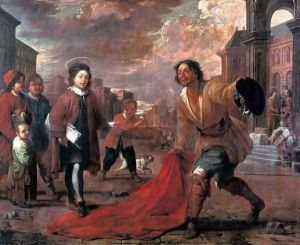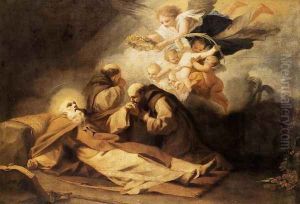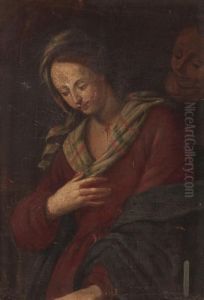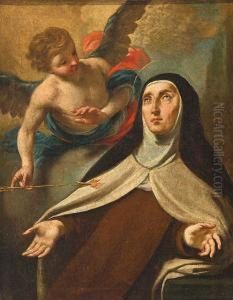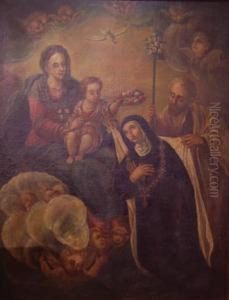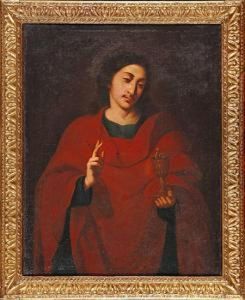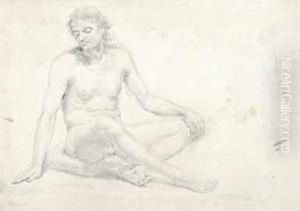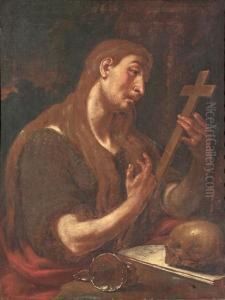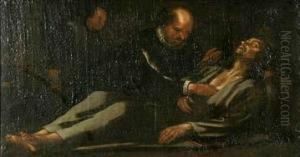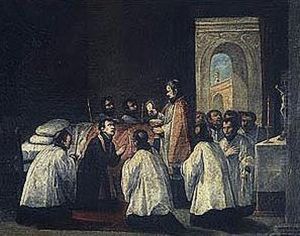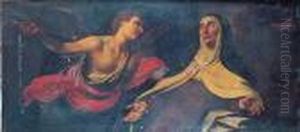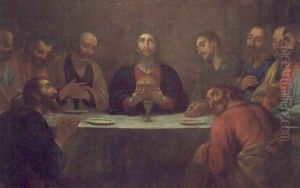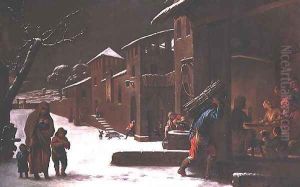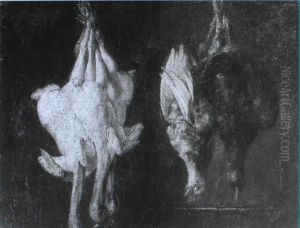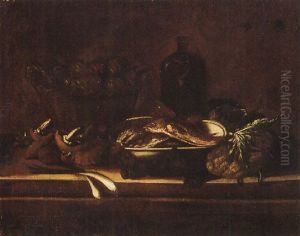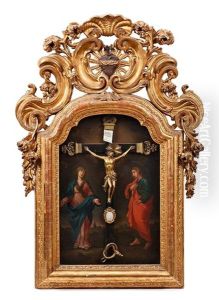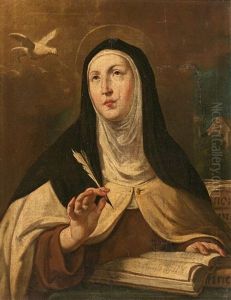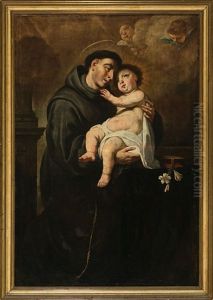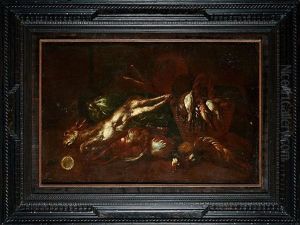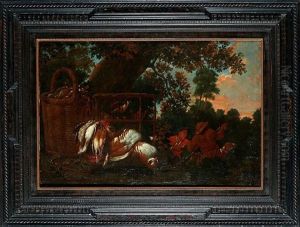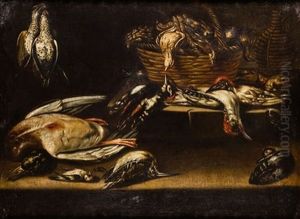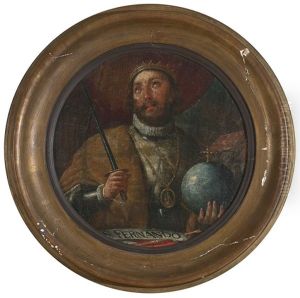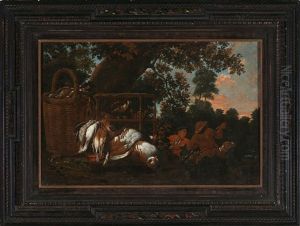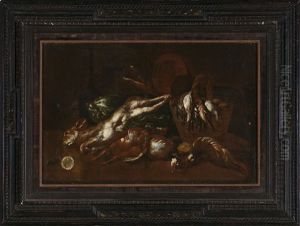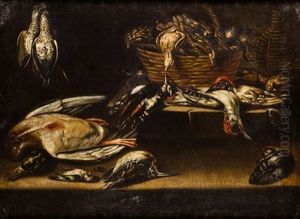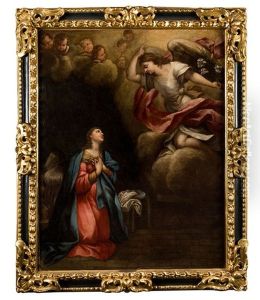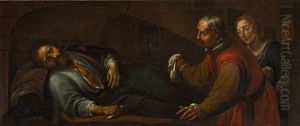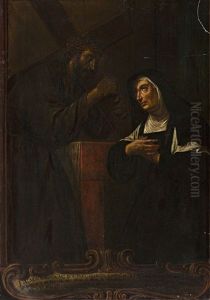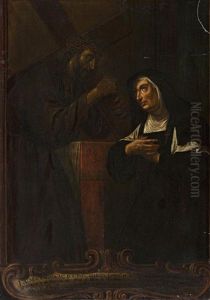Antonio Viladomat Y Manalt Paintings
Antonio Viladomat y Manalt was a prominent Spanish painter of the Baroque period, specifically known for his contributions to Catalan painting. Born in Barcelona, Catalonia, in 1678, Viladomat emerged as one of the most significant figures in the Catalan Baroque movement, which was a reflection of the broader European Baroque style but with distinct regional characteristics.
During his early years, Viladomat showed a profound interest in art, leading him to pursue a career as a painter. His work was deeply influenced by the prevailing Baroque sensibilities of the time, characterized by dramatic expression, rich coloration, and dynamic compositions. He primarily focused on religious and historical themes, which were popular among the patrons of his era.
Viladomat's career was marked by several notable achievements, including his work on the series of paintings for the Church of the Betlem (Bethlehem) in Barcelona. These works are considered some of his most significant contributions to Catalan art, showcasing his skill in depicting religious narratives with emotional depth and artistic finesse.
In addition to religious themes, Viladomat also explored genre painting, portraying everyday life scenes with a keen eye for detail and a compassionate portrayal of his subjects. This diversity in his subject matter helped establish his reputation as a versatile and skilled artist.
Despite his success, Antonio Viladomat y Manalt remains a somewhat elusive figure in art history, with many of his works lost or attributed to other artists over time. However, his surviving paintings continue to be appreciated for their contribution to the Baroque period and their reflection of Catalan culture.
Antonio Viladomat y Manalt passed away in 1755 in his hometown of Barcelona. His legacy is preserved in the collections of various museums and churches across Catalonia, where his works continue to be studied and admired for their historical significance and artistic merit.
